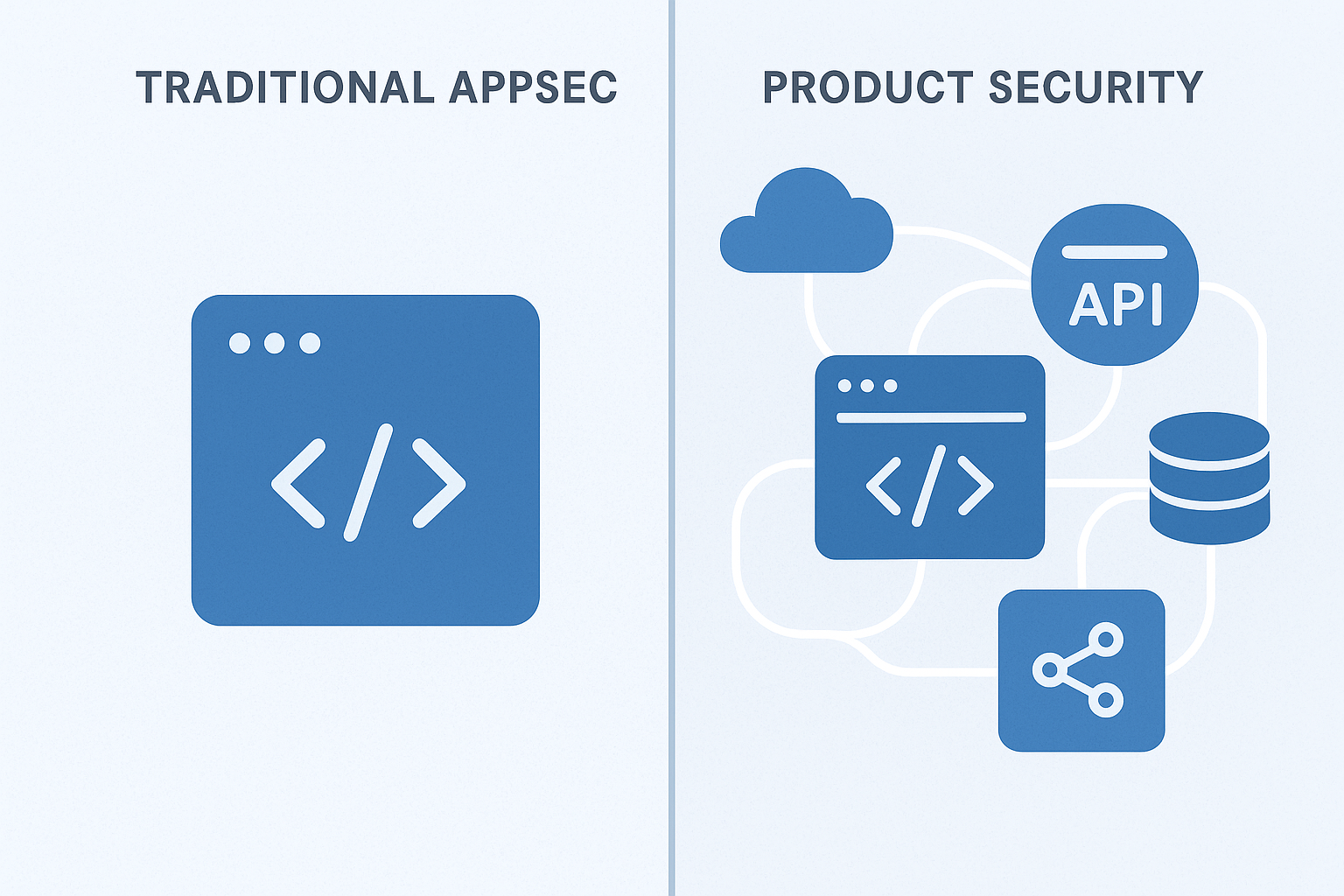· Appaxon Team · insights · 3 min read
What is Product Threat Modeling?
Product Threat Modeling represents a specialized application of threat modeling that takes a holistic view of an entire product ecosystem, extending beyond traditional technical system boundaries.

Threat modeling is a structured approach to identifying, analyzing, and mitigating potential security threats to a system, application, or process before they can be exploited by attackers. It involves systematically examining how an attacker might target a system by mapping out attack surfaces, identifying high-risk areas, and understanding the various ways malicious actors could gain unauthorized access, steal data, or disrupt operations. This proactive security practice helps teams build security into their systems from the ground up rather than trying to retrofit protection after vulnerabilities are discovered.
Beyond Traditional Technical Boundaries
Product Threat Modeling represents a specialized application of threat modeling that takes a holistic view of an entire product ecosystem, extending beyond traditional technical system boundaries. Unlike conventional threat modeling that primarily focuses on technical vulnerabilities, product threat modeling considers the complete user journey, business processes, data flows across the product lifecycle, and the intersection of security with user experience and business objectives.
This approach involves cross-functional collaboration between product managers, designers, engineers, security professionals, and other stakeholders to identify threats that could impact not just technical systems, but also user trust, brand reputation, regulatory compliance, and business continuity. Product threat modeling examines how attackers might exploit weaknesses in user interfaces, abuse product features for malicious purposes, compromise user privacy, or leverage business logic flaws to achieve their goals.
The Threat Modeling Process
The threat modeling process typically involves several key steps:
- Defining scope and assets to be protected
- Creating visual representations of system architecture and data flows
- Identifying potential threats and attack vectors
- Assessing likelihood and impact of each threat
- Designing appropriate security controls and countermeasures
Common methodologies include:
- STRIDE - categorizing threats as Spoofing, Tampering, Repudiation, Information Disclosure, Denial of Service, and Elevation of Privilege
- PASTA - Process for Attack Simulation and Threat Analysis
- VAST - Visual, Agile, and Simple Threat modeling
Strategic Value for Modern Development
Threat modeling provides significant value by enabling security teams and developers to anticipate and address risks before they turn into actual vulnerabilities in production systems. By understanding how attackers think and operate, organizations can make informed decisions about where to invest their security resources, prioritize the most critical risks, and design more robust security architectures.
This approach is particularly valuable in modern software development environments where systems are complex, interconnected, and constantly evolving, making it essential to proactively identify and mitigate potential security weaknesses. Product threat modeling further enhances this value by ensuring security considerations are deeply integrated into product strategy and user experience design, creating products that are not only functionally robust but also secure and trustworthy from the user’s perspective.




